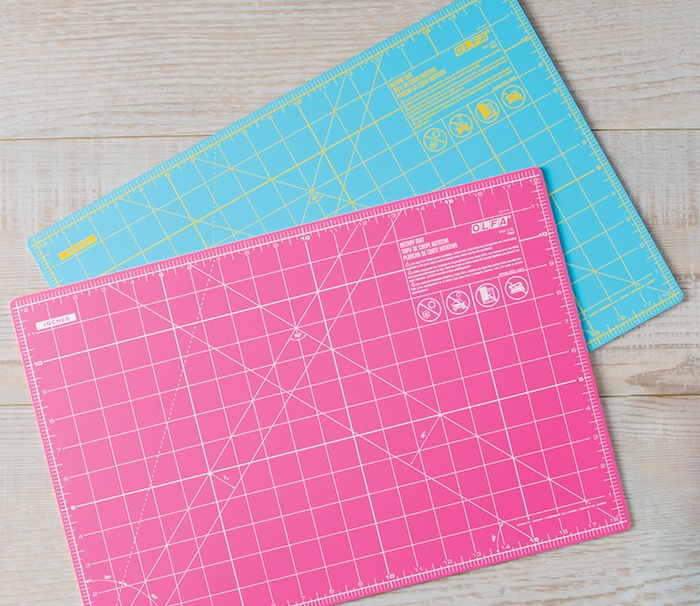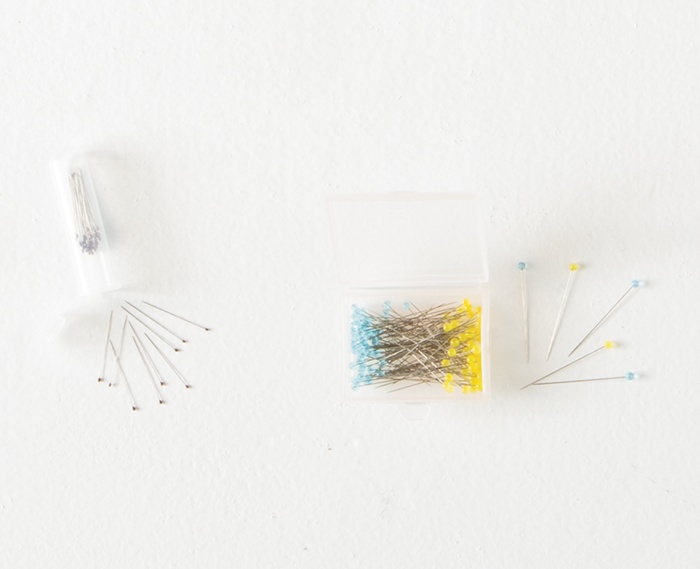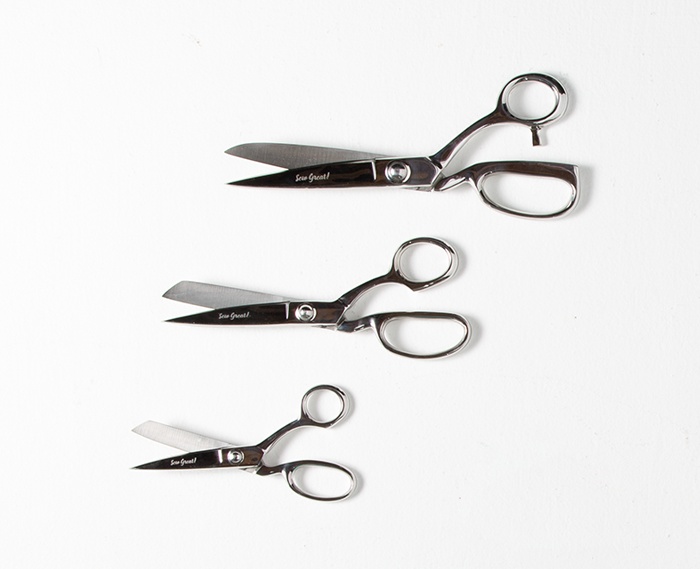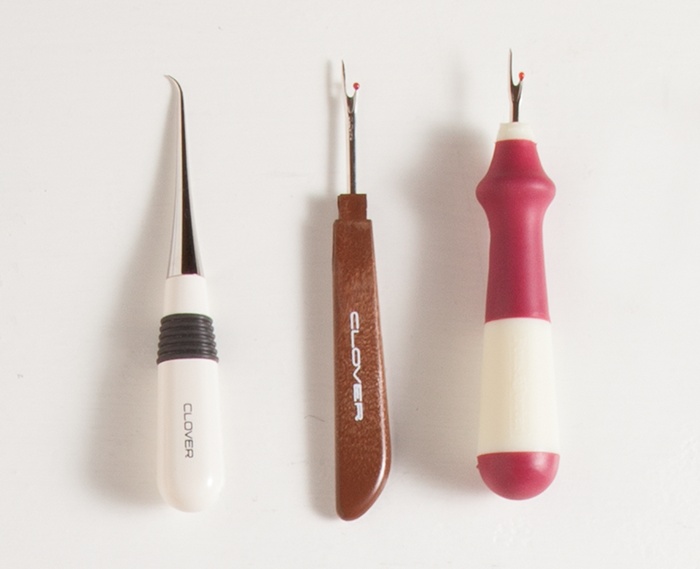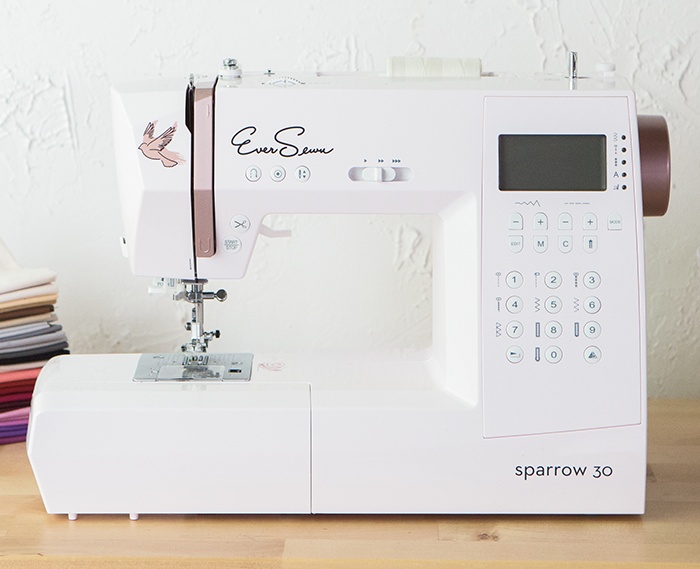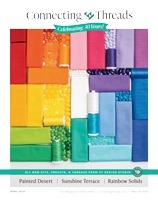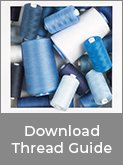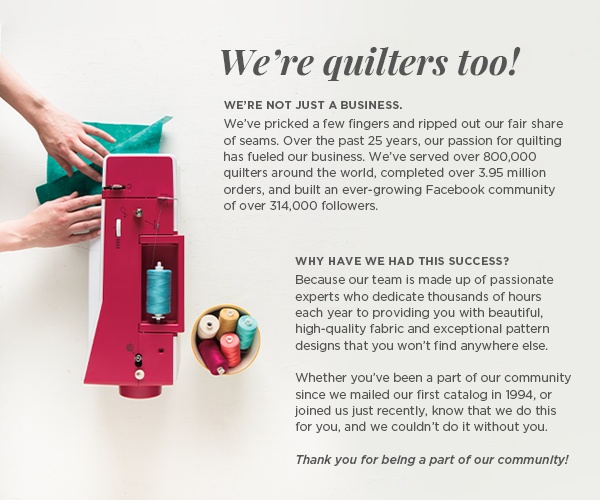A Beginner's Guide to
Quilting
Tools
When you’re a beginner, it’s not always clear which quilting tools are essential and which are helpful but not critical. That’s why we’ve put together this useful list of the most essential quilting tools.
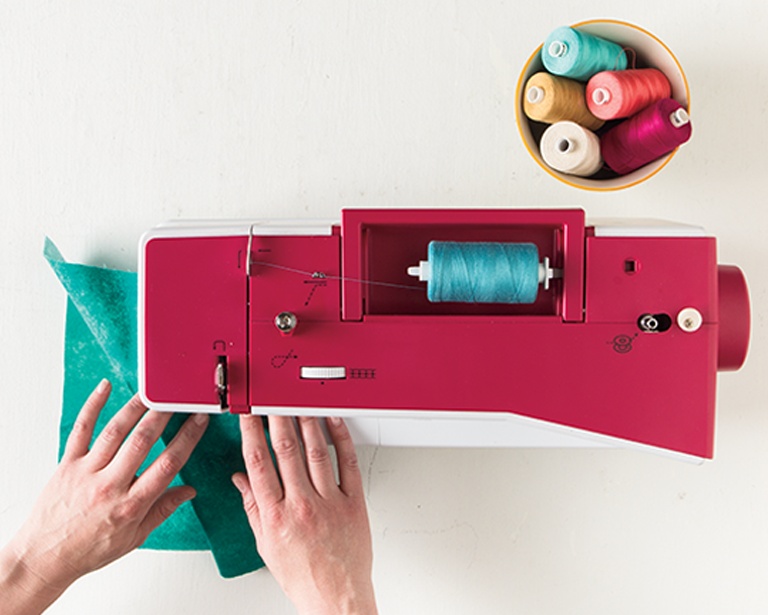
A Beginner's Guide to
Quilting
Tools
When you’re a beginner, it’s not always clear which quilting tools are essential and which are helpful but not critical. That’s why we’ve put together this useful list of the most essential quilting tools.
Rotary Cutter
Rotary cutters are used to get super straight, clean cuts from your fabric. For beginners, we recommend starting with a 45mm blade. Rotary cutters come in a variety of sizes – from 18mm to 60mm. The 18mm and 28mm cutters are used primarily for curved piecing and appliqué, and the 60mm is designed to cut through many layers of fabric (up to 8!), batting, and thicker materials, such as canvas. Like the 60mm blade, the 45mm can cut through 2-3 layers of fabric at a time and is typically much more user-friendly for beginners. Similar to the story of Goldilocks and the three bears, the 45mm cutter is just right.
Self-Healing Mats
Self-healing mats are what you will use to cut fabric on when using your rotary cutter. Most cutting mats are reversible and come with ruler grids to assist you with measuring and aligning your fabrics. While cutting mats come in many sizes, a 24” x 36” mat is a good size to start with.
Pins
Fine, straight pins with a sharp point are an essential tool for holding fabric in place while piecing. Pins with glass heads resist melting under the heat of your iron, while flat-headed pins can be easier to grasp. A magnetic tray will help keep them safely stored and less likely to end up under your feet - ouch!
Rulers
These special rulers are made out of clear acrylic with incremental grids marked along the surface. Used in concert with a rotary cutter and a self-healing mat, quilting rulers make accurately measuring and cutting fabric easy and efficient. We suggest starting with a 6” x 24” ruler - an essential tool for cutting yardage. You’ll also want to have a square ruler to square up quilt blocks before they are sewn together—we recommend a 12” x 12” ruler for this.
Scissors
While most projects are cut using a rotary cutter, sewing scissors are great to have around for special projects like templates. In total, your sewing room should ultimately have three different pairs of scissors: a small pair of snips for cutting loose threads, a pair to cut paper, and a pair strictly to be used for cutting fabrics.
Seam Rippers
Every quilter needs a seam ripper. Seam rippers are great to have around because after all, you can’t sew a perfect seam every time! Truth be told, there are several seam rippers stashed around the Connecting Threads offices.
Iron
A good-quality iron with a steam setting is essential for making accurate blocks with seams that lay flat. The steam comes in handy for getting stubborn wrinkles out, and for setting your seams.
Sewing Machine
You don’t need anything fancy when you’re getting started. If your sewing machine can sew a straight line, you have everything you need to begin piecing.
Sewing Machine Needles
You don’t need anything fancy when you’re getting started. If your sewing machine can sew a straight line, you have everything you need to begin piecing.
Marking Tools
Marking tools are a handy thing to have around for a multitude of purposes. Whether it be marking your fabrics, tracing patterns, making notes, etc., the most important thing is that the marks you make on your fabrics only last as long as you need them. Before you use your marking tool, read the instructions and understand how it gets erased.
Thread
For piecing, a high-quality, 50-weight cotton like our very own Essential™ Thread is ideal. You’ll want a selection of neutral colors in light to dark. White, off-white, and light grey are recommended for light to medium toned fabrics. Black, brown, dark grey, and navy are perfect for darker fabrics.



